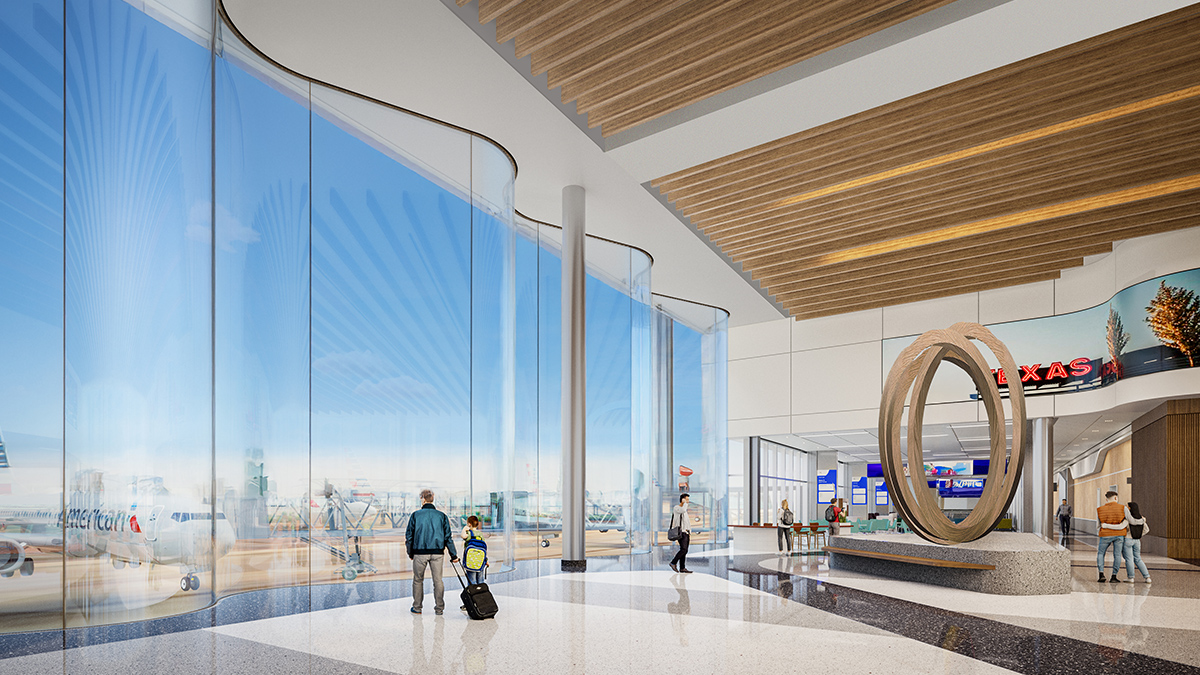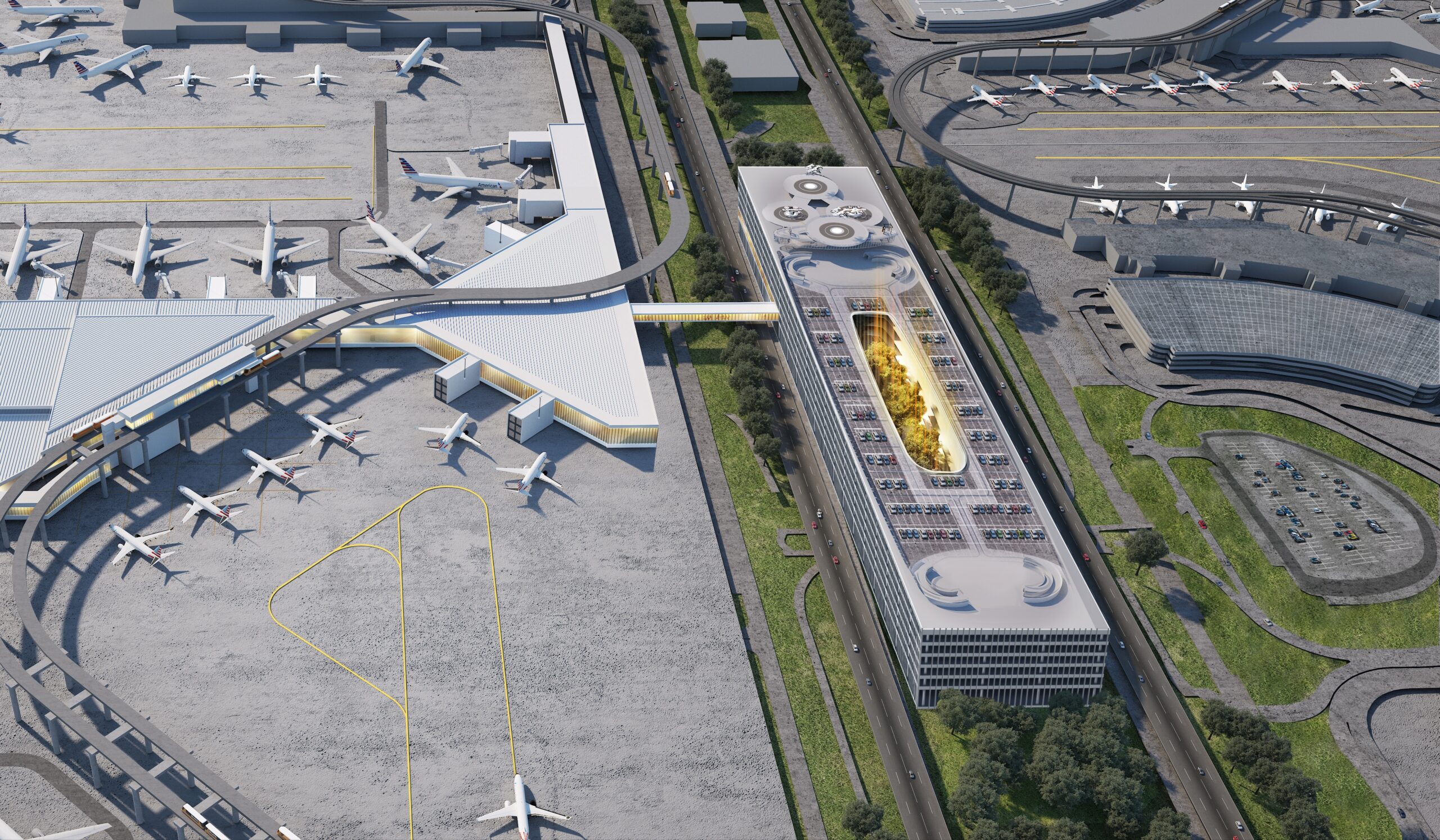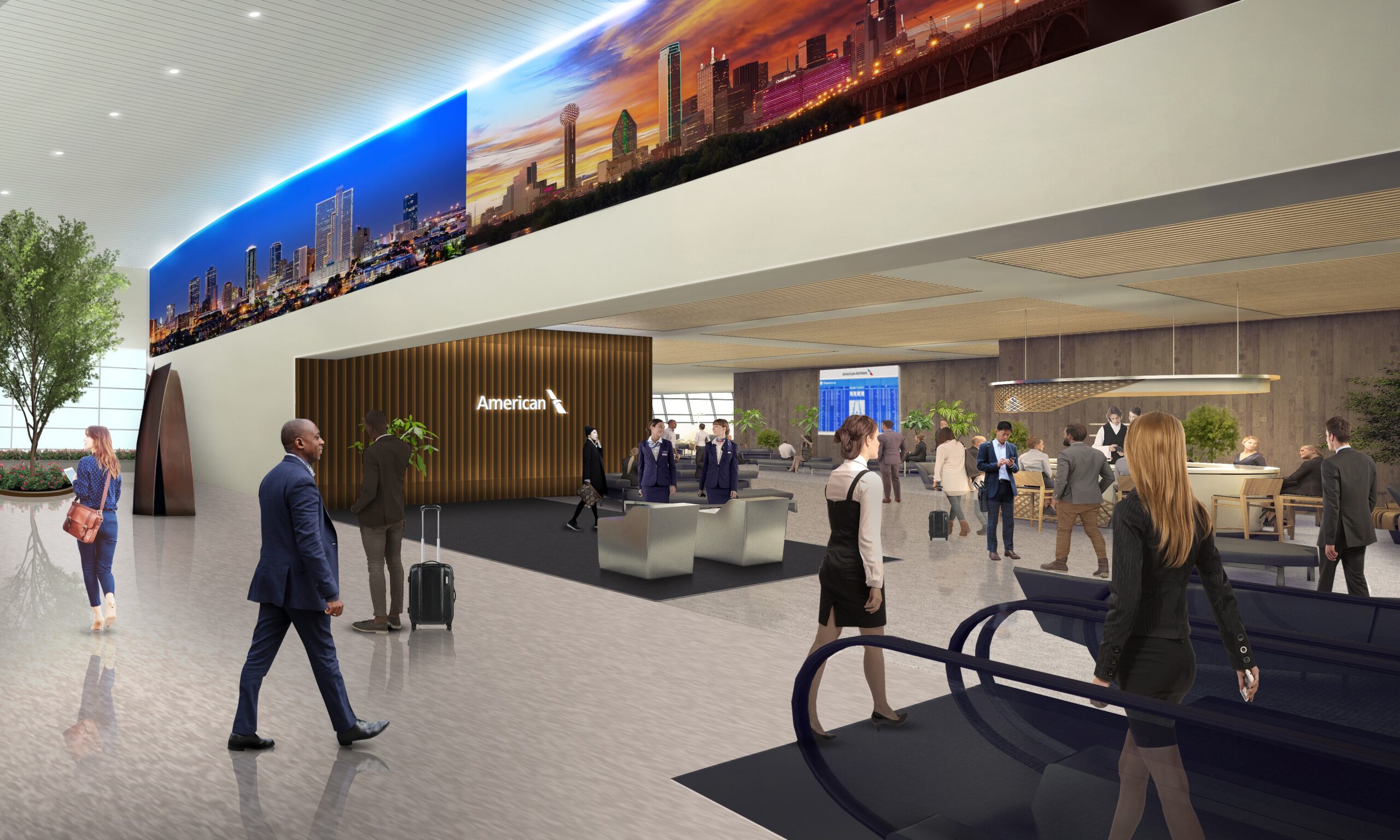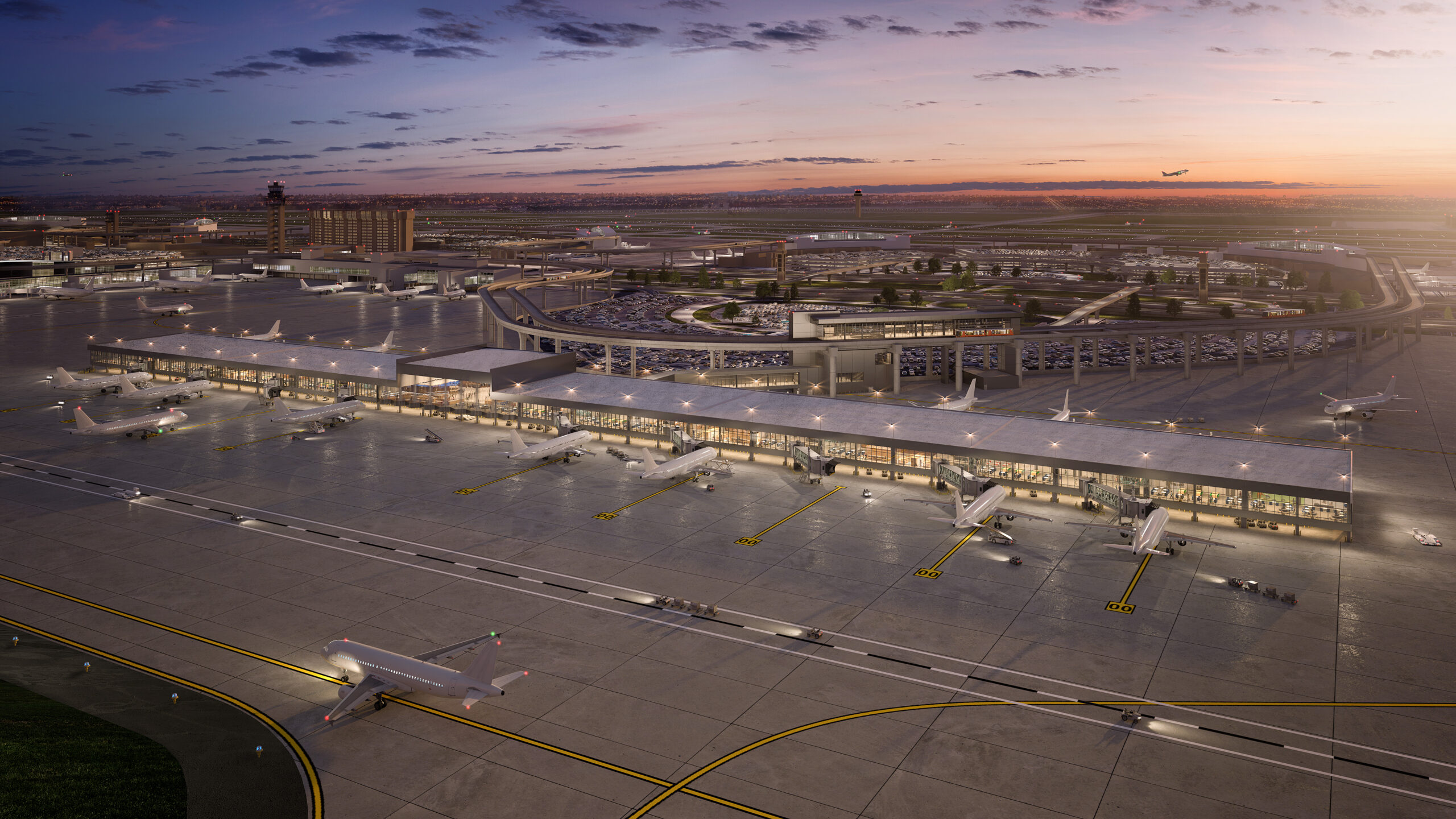American Airlines Unveils $4 Billion Terminal F Expansion at Dallas/Fort Worth
The airline and DFW double down with a $4.8B Terminal F expansion, aiming to create the world’s most powerful airline hub
by George Gomez
May 2, 2025

Photo: Courtesy of American Airlines
Standing at the heart of one of America’s fastest-growing regions, Dallas/Fort Worth International Airport is no stranger to ambition. But the scale of what’s coming next marks a defining moment—not just for the airport, but for American Airlines and the future of global connectivity.
On April 25, American Airlines and DFW jointly unveiled plans to more than double the size of the upcoming Terminal F, expanding it from 15 to 31 gates—all operated exclusively by American. With a revised investment of $4.8 billion (up from the initial $3 billion estimate), the new Terminal F isn’t just a terminal—it’s a commitment to hub dominance, international growth, and operational efficiency in the decades ahead.

Photo: Fort Worth Mayor Mattie Parker, DFW CEO Sean Donohue, Dallas Mayor Eric Johnson, Chair of DFW Board of Directors DeMetris Sampson, and American’s CEO Robert Isom (L-R). Courtesy of American Airlines
“DFW is American’s largest and most critical hub, and with this expanded plan for Terminal F, it has a clear path to become the largest airline hub in the world,” said Robert Isom, American’s CEO, during the announcement. “This isn’t just a terminal. It’s the platform for the next generation of air travel.”
From Vision to Velocity: Why Terminal F Now?
When Terminal F was first proposed in 2019, it was envisioned as a future-facing expansion to accommodate regional growth. But the pandemic delayed construction and put long-term plans under review. Fast forward to 2025, and DFW is handling nearly 70 million American Airlines passengers annually—more than at any time in its history.

Photo: Courtesy of American Airlines
In response, American and DFW Airport decided not to wait. “Demand has returned stronger than expected, and our long-term forecasts now exceed pre-pandemic projections,” said Sean Donohue, CEO of DFW Airport. “Terminal F is no longer about planning for the future. It’s about catching up to the present—and preparing for what’s next.”
This time, the plans are more ambitious and accelerated. Instead of a phased rollout of a satellite terminal linked to Terminal E, the new Terminal F will be a full-scale facility, directly connected to Terminal D with its own curbside access, parking structure, check-in hall, and Skylink station. This layout is designed to simplify the experience for American’s most frequent and high-value customers: connecting travelers.

Photo: Courtesy of American Airlines
Roughly 60 percent of American’s passengers at DFW are making connections—many between domestic and long-haul international flights. Terminal F aims to minimize their walking time, improve directional flow, and streamline processing with centralized baggage handling and self-serve tech.
Hub Economics, Modernized
For American Airlines, Terminal F represents more than just gates. It’s a generational investment in hub economics: a future-proofed, high-efficiency platform at a fortress hub where the airline controls nearly 85 percent of traffic.
The numbers tell the story. American currently operates over 900 daily flights from DFW to more than 240 destinations worldwide. Its workforce in the region exceeds 36,000. By 2026, the airline expects to move more than 70 million people through the airport each year.

Photo: Courtesy of American Airlines
Adding 31 new gates—most designed to handle widebodies or high-capacity narrowbodies—gives American the flexibility to deepen frequency on core business routes, add seasonal or underserved destinations, and grow its international footprint without compromising on gate availability or on-time performance.
“This is not just about volume,” said Isom. “It’s about reliability, scale, and delivering a seamless, premium experience to our most loyal travelers.”

Photo: Courtesy of American Airlines
To that end, Terminal F is also being designed with a premium focus in mind: expanded lounges, more private spaces for top-tier frequent flyers, tech-enabled check-in and security, and a new retail and dining mix intended to reflect North Texas’s global identity.
A Connected Future for Global Travelers
For business travelers who frequently use DFW as a connecting hub, Terminal F’s expansion promises a more intuitive, less stressful experience—especially on long-haul international itineraries.
Currently, international arrivals often mix with domestic flows, which can add congestion and walking distance for tight connections. The new Terminal F aims to resolve that, with additional international-capable gates, expanded customs processing, and a direct connection to Terminal D’s existing global concourse.

Photo: American Airlines gates. Courtesy of Dallas/Fort Worth International Airport
This approach will also support the airline’s growth into emerging markets in Asia, Latin America, and Europe—especially as American builds out new long-haul fleet capacity with the Boeing 787-9 and Airbus A321XLR.
The broader expansion also includes a refresh of Terminal C and additional gate renovations at Terminals A and C, under the DFW Forward capital improvement program. Together, these projects are now part of a more than $12 billion investment that will transform the entire airport campus.
Long-Term Stability, Short-Term Gain
As part of the Terminal F agreement, American has extended its Use and Lease Agreement with DFW through 2043. That long-term commitment provides predictable costs and operational continuity for both parties—key factors in airline planning and airport financing.

Photo: Terminal F. Courtesy of Dallas/Fort Worth International Airport
For the cities of Dallas and Fort Worth, which co-own DFW Airport, the expansion offers more than just connectivity. It brings construction jobs, infrastructure resilience, and a global competitive advantage in attracting businesses and conventions.
“Fort Worth-based American Airlines continues to double down on DFW as its home base with another major investment in the airport’s infrastructure,” said Fort Worth Mayor Mattie Parker. “This expansion ensures that DFW will be ready to accommodate the historic growth happening in Fort Worth and all of North Texas.”
The Bottom Line for Business Travelers
At a time when other airlines are scaling back on regional operations or consolidating hubs, American is placing a long bet on North Texas—and putting infrastructure behind it. Terminal F, with its 31 new gates, premium focus, and optimized connectivity, will be the centerpiece of that strategy.

Photo: American Airlines, Boeing 777-300ER. Courtesy of Dallas/Fort Worth International Airport
For frequent flyers, the value is tangible: more space, fewer delays, smarter connections, and a higher-quality experience at one of the most critical junctions in American’s global network.
Construction is expected to begin later this year, with the first phase of Terminal F opening in 2027. Once complete, DFW won’t just be American’s biggest hub. It could well be the most advanced transfer gateway in the world.




